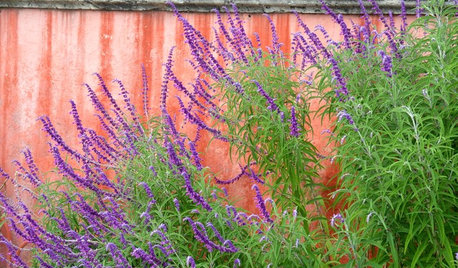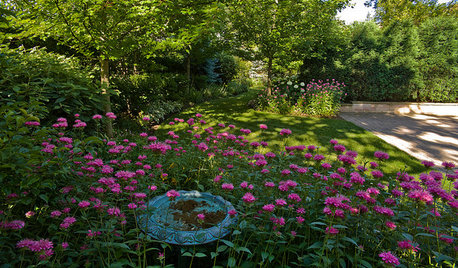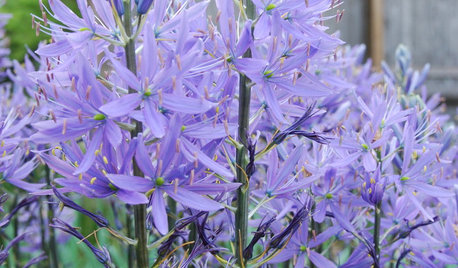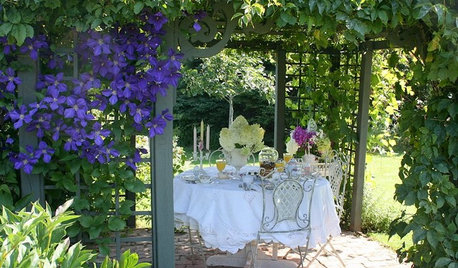What do you interplant with spring bloomers that die down?
diana_noil
15 years ago
Related Stories

SPRING GARDENING7 Spectacular and Practical Spring-Flowering Trees
Put on a beauteous show in the garden with a landscape tree awash in flowers — just do your homework first
Full Story
GARDENING GUIDESGreat Design Plant: Japanese Anemone
This autumn bloomer's showy white blossoms add spark to your late-season plant mix
Full Story
GARDENING GUIDES10 Plants for Colorful Fall Blooms in the Drought-Tolerant Garden
Want fall color but not a big water bill? Consider these not-too-thirsty fall bloomers
Full Story
WINTER GARDENINGPruning Secrets for Exquisite Roses
Encourage gorgeous blooms year after year with this time-tested advice on how to prune your rosebush in winter for health and shape
Full Story
SPRING GARDENINGTop 10 Scented Plants for Your Garden
A palette of perfumed plants can transform even the smallest of gardens into a sensory delight
Full Story
GARDENING GUIDESAttract Hummingbirds and Bees With These Beautiful Summer Flowers
Roll out a welcome mat for pollinators to keep your landscape in balance and thriving
Full Story
GARDENING GUIDES6 Unsung Bulbs for Fall Planting
Don't hang up your spade after summer — plant these unusual bulbs in fall for a spectacular spring show
Full Story
LANDSCAPE DESIGNExuberant Self-Seeders for Gorgeous, Easy-Care Gardens
Keep weeds down, color high and maintenance low with beautful plants that sow themselves
Full Story
BULBSGreat Design Plant: Wild Hyacinth for a Bolt of Blue
Get knockout spring blooms on spiky stems by planting these bulbs before the ground freezes
Full Story
GARDENING GUIDESPacific Northwest Gardener: What to Do in May
Take advantage of May's warmth to prune spring blooms and plant vegetables and annuals for a summer bounty
Full Story





flower_julie
ginny12
Related Professionals
Oconomowoc Landscape Architects & Landscape Designers · Roosevelt Landscape Architects & Landscape Designers · Medford Landscape Contractors · Fort Wayne Landscape Contractors · Hannibal Landscape Contractors · Lynn Landscape Contractors · New Berlin Landscape Contractors · Salem Landscape Contractors · San Antonio Landscape Contractors · San Bruno Landscape Contractors · Southbury Landscape Contractors · Twin Falls Landscape Contractors · Boerne Roofing & Gutters · Manchester Roofing & Gutters · Oakville Siding & Exteriorseaglesight
irene_dsc
ianna
Nell Jean
DYH
faltered